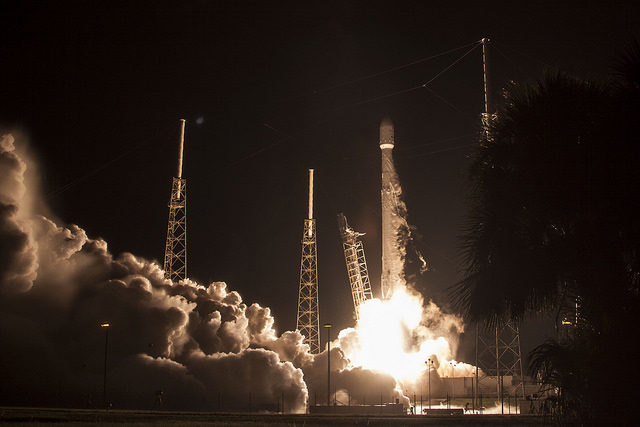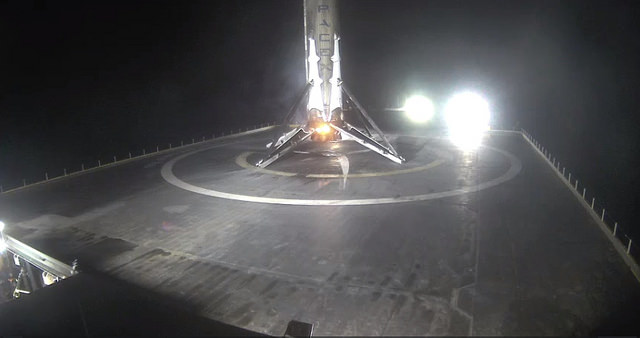
There is a reason the phrase “rocket science” is the standard reference point for something that is overwhelmingly difficult and deadly dangerous.
First article describes SpaceX’s loss of a rocket and payload. Second article describes the huge financial reward for that huge risk.

9/3 – Business Insider – SpaceX and NASA have released full statements about Thursday’s rocket explosion – here’s what they said – On September 1, a Falcon 9 rocket from SpaceX exploded on the pad during the loading of fuel for a standard test firing of the engines in preparation for launching a communications satellite for Facebook. The rocket and payload were both destroyed.
The payload would have been used by Facebook to provide internet access to large portions of sub-Sahara Africa.
The Facebook satellite reportedly cost about $200M. Keep that in mind during my discussion of the next article.
The unusual part of this failure is it occurred while fuel was being loaded. Launch failures usually take place during lift stage, at the maximum physical stresses and maximum performance requirements. This time, it was during the stage of routine test firing, more specifically during fuel loading. The engines weren’t firing and the array of subsystems that support engine burn were not in use.
At an absolute minimum this will disrupt the remaining 10 launches SpaceX has scheduled by the end of the year.
SpaceX says they have a manifest of around 70 launches with revenue of around $10B. That would put the average revenue per launch somewhere in the range of $140M, give or take large rounding errors. Considering the posted prices in the following article, I think there are additional launch costs beyond the posted base-line sticker price.
SpaceX has three launch pads, including SLC-40 at Cape Canaveral which has now been damaged. There is another launch pad in Florida under construction and one being renovated at Vandenburg AFB in California.
9/4 – New York Times – SpaceX’s Explosion Reverberates Across Space, Satellite, and Telecom Industries – Article provides a treasure-trove of information on the economics of space flight.
It takes two years or more to build a satellite and the cost is in the range from $200M up to $400M.
Add in the launch cost which is $62M for a Falcon 9 from SpaceX and $90M for their Falcon Heavy. Article says prices from the competitors are at least double those amounts. Main competitors, as my little brain understands, are ULA (joint venture of Lockheed Martin and Boeing), Arienespace (European), and ILS (US-Russian joint venture using Proton booster).
Call that $62M with SpaceX and at least $125M for another provider.
Insurance is another major cost. Until now, the risk of loss before the engines fire off has been low, with insurance running a fraction of a percent of the satellite’s cost. Coverage after the engines light up run from 5% to 15%, according to the article.
With the range of that estimate (5%-15%) for launch insurance, the prelaunch insurance costs shouldn’t be included in the following estimate. Here is my recap of the costs:
- $200M – $400M – Satellite
- 5% – 15% – launch insurance
- $62M – $125M – launch
So here is a wild guess on the range of cost for two satellites:
- $200M – cost of satellite
- $10M – 30M – launch insurance
- $62M – $125M – launch
- $272M – $355M – rough guess on cost to get satellite in orbit
The Facebook satellite lost last week reportedly cost $200M.
Here is another calculation for the high-end of the range:
- $400M – cost of satellite
- $20M – $60M – launch insurance
- $62M – $125M – launch
- $482M – $585M – guess on cost to get satellite in orbit
Is the cost worth getting a satellite into orbit?
Oh yeah, it’s worth it.
Satellites generate a huge amount of money. Article says the upfront cost is recovered in “a few years.” Picture the internal rate of return when the profits in the first few years will cover the upfront costs of somewhere between $300M and $600M.
Article says after cost recovery, a satellite throws off nice profits for as long as it operates, up to perhaps a decade.
What could that look like? Let’s say it takes three years to recover costs. That would put the profits (not revenue, but profits) at around $100M or $200M a year. Let’s assume a remaining useful life of 5 years and 10 years. For the lower range of satellites costing $200M to build, that string of assumptions would generate profits over a satellite’s lifetime in a range of $500M or $1,000M. With this long list of assumptions, a satellite costing $400M to build would generate profits somewhere in the range of $1,000B or $2,000B.
That would be an astounding return. Keep in mind the risk – we are talking about having to do a mind-boggling amount of actual rocket science to pull that off.
Size of the satellite market
Article cites a report which indicates the satellite industry generated $127B in revenue in 2015 (just so the digits for industry revenue match my wild guesses above, that would be $127,400M).
The launch industry generated $5.4B in revenue (which would be $5,400M).